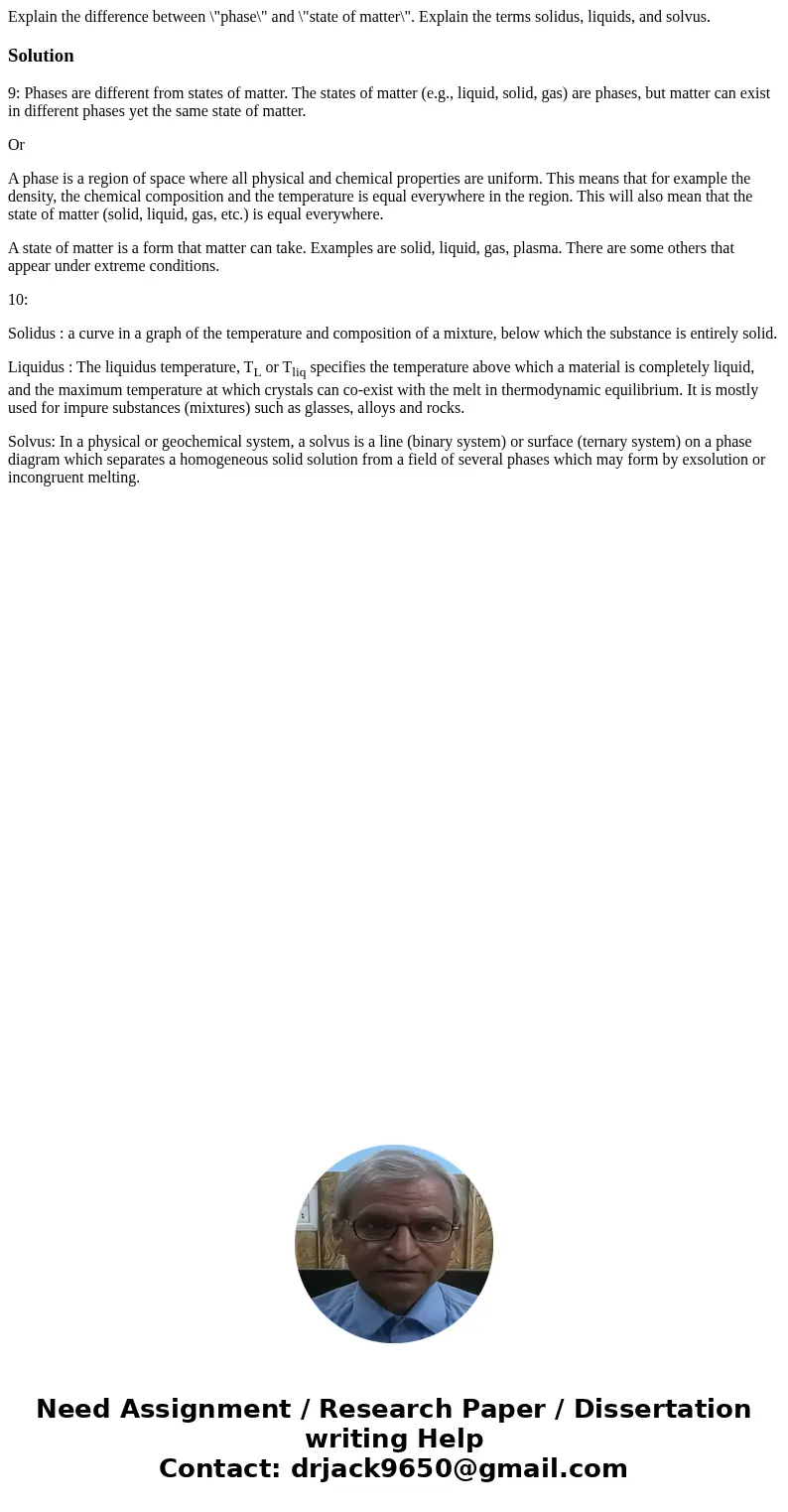Explain the difference between phase and state of matter Exp
Solution
9: Phases are different from states of matter. The states of matter (e.g., liquid, solid, gas) are phases, but matter can exist in different phases yet the same state of matter.
Or
A phase is a region of space where all physical and chemical properties are uniform. This means that for example the density, the chemical composition and the temperature is equal everywhere in the region. This will also mean that the state of matter (solid, liquid, gas, etc.) is equal everywhere.
A state of matter is a form that matter can take. Examples are solid, liquid, gas, plasma. There are some others that appear under extreme conditions.
10:
Solidus : a curve in a graph of the temperature and composition of a mixture, below which the substance is entirely solid.
Liquidus : The liquidus temperature, TL or Tliq specifies the temperature above which a material is completely liquid, and the maximum temperature at which crystals can co-exist with the melt in thermodynamic equilibrium. It is mostly used for impure substances (mixtures) such as glasses, alloys and rocks.
Solvus: In a physical or geochemical system, a solvus is a line (binary system) or surface (ternary system) on a phase diagram which separates a homogeneous solid solution from a field of several phases which may form by exsolution or incongruent melting.

 Homework Sourse
Homework Sourse